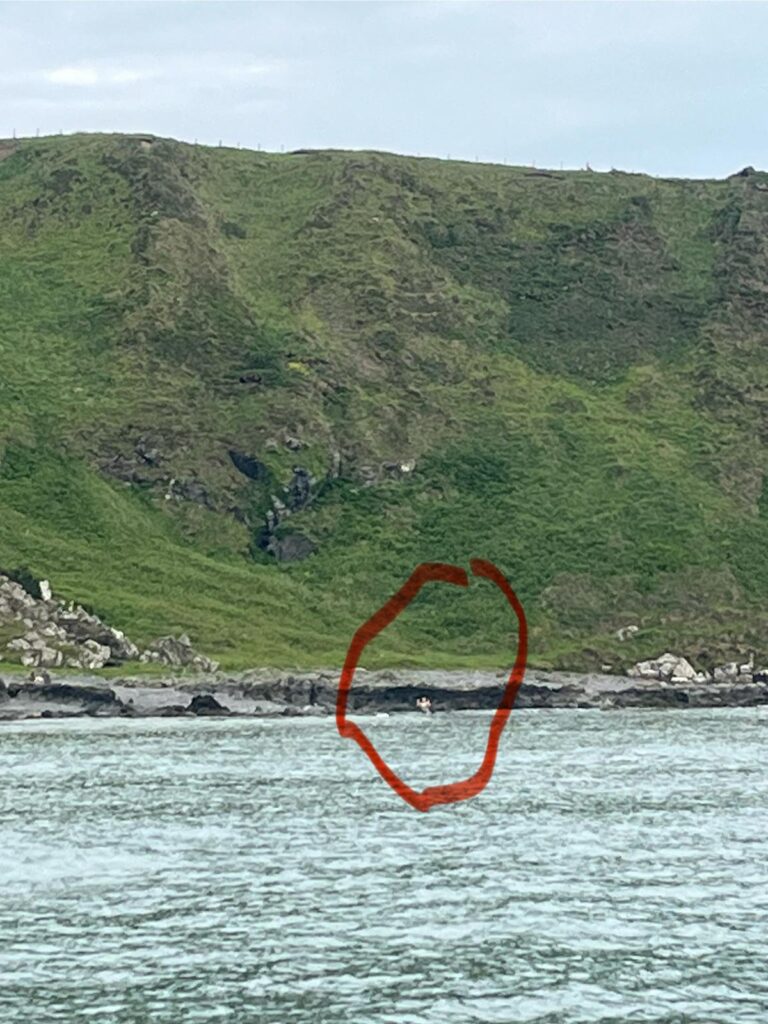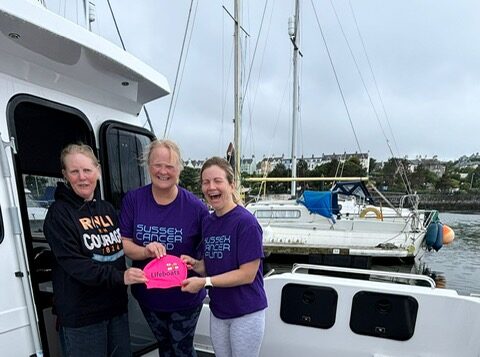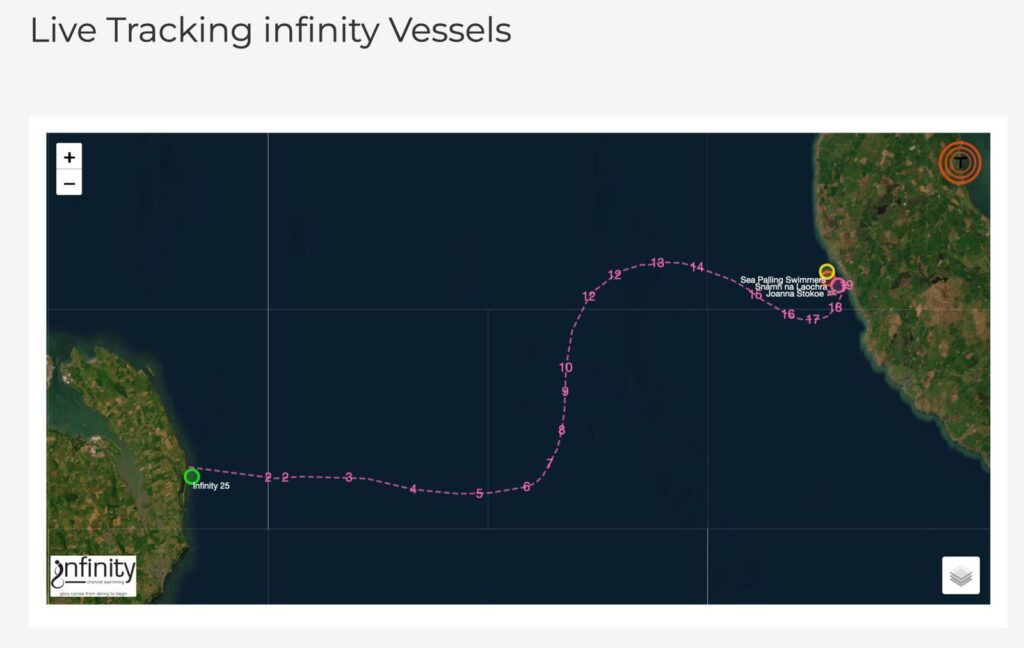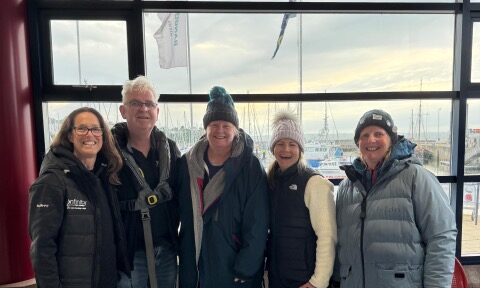Doctor in the Deep: Jo Stokoe Swims the North Channel
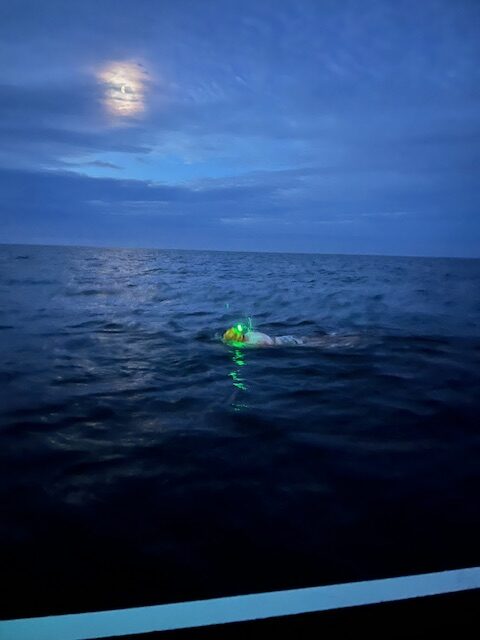
A huge thank you to Dr Jo Stokoe, Oncologist at University Hospitals Sussex NHS Foundation Trust, for taking on an extraordinary challenge to support the Sussex Cancer Fund and the RNLI. Jo recently completed one of the most gruelling open water swims in the world – the North Channel – in an incredible 18 hours and 53 minutes. This phenomenal effort not only demonstrates Jo’s resilience and determination but also her deep commitment to supporting people affected by cancer across Sussex. If you’re able to, please consider donating – your support will be shared between the two charities that mean so much to her.
Here, in her own words, Jo shares the story behind her epic swim:
“Last week I swam the North Channel from Northern Ireland (NI) to Scotland, 34.5 km in cold sea. It took me 18 hours and 53 minutes.
I was swimming for the Sussex Cancer Fund and RNLI and would like to raise equal amounts for both charities if possible
I realise times are tough but if you can spare a few pounds and If you would like to “buy me a drink” to celebrate, that would be amazing. You can choose which charity to donate to.
This is the link:
Last August, I spent over a week in Donaghadee, NI waiting to do this swim but the weather was not kind and I had to wait it out another year. Few slots were left and I took the offer of the first June 2025 tide (where I was told they only book relays in as it is too cold!). This was a risk as most soloists prefer later in the summer for warmer water temperatures.
My swim started at 11pm Tuesday 17th June, in the dark from the Gobbins (north of Bangor, NI) and finished nearly 19 hours later on the west coast of Scotland on Wednesday 18th June. My pilot boat was EIGRIOCH which is Irish for infinity (Infinity was the company I booked with) piloted by Ian Conroy and observer Jenn Fitzgerald
Water temp at the start was 11C and average water temp for the swim was 12C. I was just in my cossie, swim hat and goggles as per channel swimming rules. I jumped off the boat in the dark and swam to the Gobbins cliff face, guided by a white light. I touched the cliff, and then swam back to my boat. My swim had started. I was fed by my crewmates Carmen and Hildi every 30 minutes. Warm maltodextrin feeds, tea and little solid snacks were thrown to me from the boat in a bottle and pot, attached to a rope and a glow stick (to help me see it in the dark). 3 other boats started with me and were all relay teams.
It was hard for me to see the boat in the darkness as they only had 3 small green lights on the side to stop the jellyfish from coming up to the surface. The NC is known for the Lions Mane jellyfish (with a nasty sting).Swimming in the dark for a few hours we saw a strawberry moon rise up in the south. It was really hard and I was willing the sun to rise so I could see my boat and crew and hopefully feel some warmer air on my back
In the middle of the NC is Beaufort’s Dyke, a 200 to 312m deeper section of water and where munitions from WW2 were dumped. I felt the water temperature drop considerably as I swum over this section. I asked my crew to make my feeds warmer, which thankfully they did.
As the day went on, and I kept swimming, I saw some jellyfish and got stung a few times but not too badly. I made the fatal error of looking ahead and seeing Scotland. A friend had advised me not to do that as it never gets closer. And it didn’t. That plays with your head and I just had to give myself a talking to and focus on my boat, my stroke and keep my head down.
Eventually, the green cliffs looked even greener and I could see sandy beaches and rocky cliffs getting nearer. Hildi threw me a feed and shouted that it was a “Party Feed” . It was Coca Cola and a Jaffa cake. I didn’t want to think it, but I thought perhaps this is my last feed? (it was)
The tide was pushing me south now and currents and rip tides were against me as the pilot and crew were directly me to the land ahead. I saw a nice sandy beach to my left but was instructed to head for the rocks. This was due to the strong rip current not making a sandy beach landing safe.
As I swum in, the boat had to hang back as the water was too shallow and rocky. Near the shore, strong surf was pushing me in and I was worried I was going to get smashed on to the rocks. The water became shallower and I started crawling along the seaweed and rocks to get to a rock that I could stand up on. It was too rocky for me to get to the beach but I was able to kneel on the nearest rock and put both arms in the air to let my boat crew knew I had finished. I collected 5 pebbles from the seabed. One for me and one of each of the boat crew.
I had to swim hard over the surf and against the tide and currents to get back to the boat, but managed to get there and climb back on to the boat
I really could not believe what we had just done. Ian, pilot, said it was an “audacious swim” and asked me if I could have kept swimming (to which I replied yes!)
Carmen and Hidi helped get me dressed and warmed up. I felt quite sick so stayed outside on the back on the boat and we sped our way back to Bangor marina accompanied by some dolphins along the way. The relay boats out with me had reported seeing a Minke whale in the distance during their swims.
So, it was done.
Subject to ratification by the ILDSA, I am the 165th solo swimmer to have swum the North Channel, the 69th female soloist and the earliest female solo crossing ever in a season.
It will take some time for that to sink in.
It was not possible without my amazing pilot boat and crew Carmen and Hildi. Also, all the support I have had to get me to the start.
I could write a lot more about this swim, but this email is long enough now and well done if you have read this far.
Thank you for all your support
Jo Stokoe”
